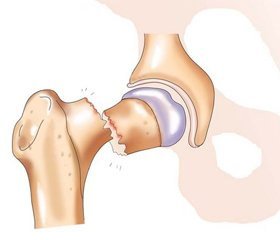Журнал «Травма» Том 16, №1, 2015
Вернуться к номеру
Study indicators of bone metabolism in patients with diabetes mellitus type 2 with trochanteric area fractures
Авторы: Shymon V.M., Stoyka V.V., Sheregiy A.A., Shymon M.V., Slyvka R.M. - Uzhgorod National University. Uzhgorod, Ukraine
Рубрики: Травматология и ортопедия
Разделы: Клинические исследования
Версия для печати
bone metabolism, diabetes mellitus.
Abstract. Due to the increase in life duration of patients with type 2 diabetes, the problem of abuse of bone metabolism in this category is extremely important for today. It is known that in patients with type 2 diabetes have changes in bone metabolism. In recent decades, a large number of studies conducted to determine changes in bone in patients with type 2 diabetes. The available data are very different. Thus, according to different authors available as an increase in bone mineral density (BMD), normal density and decrease in BMD compared with controls. In a meta-analysis of observational experiments by L. Ma and co-authors (2012) noted that these differences may be related to differences in the design of experiments methodology for determining BMD, samples of patients and the presence of complications. We believe that individual indicator BMD may not fully reflect osteoreparation processes. Denominated ultrasound densitometry data with mineral and hormonal balance will better understand the changes in bone metabolism in patients with type 2 diabetes and help find ways to treat and prevent.
Purpose. To study changes in bone metabolism in patients with type 2 diabetes with trochanteric area fractures of femur.
Materials and methods. In the period from 2012 to 2015 examined 42 patients who were hospitalized in the clinic by department of general surgery «UzhNU» about trochanteric area fractures of femur. The affected women were 34, men -8. Age composition ranged from 48 to 79 years, everage - 67 years. Before trauma patients lead an active life.
The main group consisted of 19 patients with type 2 diabetes. Body mass index (BMI) was 29.4 (25,7-34,2) kg / m², levels of glycosylated hemoglobin (HbA1c) 9,6 (7,7- 11,3)%. Some patients (n = 13) took sulfonylurea drugs 10.5 (7-10,5) mg / day, of metformin - 1.5 (1-1.5) g / day, and combinations thereof, and other (n = 5 ) received combination therapy with insulin. The average duration of the disease diabetes was 8 years. Newly diagnosed diabetes was 1 case, in 4 patients disease duration was 5 years, 7 - 5 to 10 years, 7 - more than 10 years.
Among the complications of diabetes was more frequent diabetic micro- and macroangiopathy of extrimities - 9 people, diabetic retinopathy - 5 people, diabetic neuropathy - 4 people. Cardiovascular diseases were observed in 13 people. The study didn`t include patients with pathological fractures, cancer and co-morbidities pathology associated with risk reduction in BMD in order to increase the reliability of the results.
The control group consisted of 23 patients with trochanteric area fractures in femur in which level of sugar and serum glycated hemoglobin does not exceed the norm. BMI was 28.9 (25,3-33,9) kg / m². Both groups were matched by age, sex, severity of the general condition and the nature and methods of fracture surgery.
Results and discussion.
In people with diabetes type 2 violation phosphorus-calcium balance may be at different stages of the disease, and many researchers indicated normal or slightly reduced levels of calcium and phosphorus in the blood of patients, which coincides with our data.
In the experimental group levels of calcium and phosphorus were lower than in the control group, but were within normal limits. The same is true of Hydroxyvitamin 25 (OH) D level of which was in the normal range in both groups. Alkaline phosphatase level was higher in the experimental group, but significant variations were found.
Important role in the regulation of osteogenesis and osteoreparation pay parathyroid hormone (PTH). In the experimental group was marked higher levels of parathyroid hormone than in the control group, and although in some patients with poorly controlled glycemia it was higher than normal, the average was between norm. It may be noted that usually the normalization of blood glucose to normal levels and parathyroid hormone as well.
Nowadays admitted that the most informative indicator of bone growth is the level of osteocalcin, which is synthesized by osteoblasts. In patients with type 2 diabetes osteocalcin level was below normal, or was at the lower limit of normal. It was significantly lower than patients in the control group. It follows that the level of bone formation in patients with type 2 diabetes lower than in healthy individuals.
In the study data densitometry in three locations (lumbar, proximal femur, forearm) reduction in bone mass (T <-1) detected in most patients, with those in the experimental group it was more pronounced than in the control group. In the experimental group prevailed patients with a diagnosis of osteoporosis (T <-2.5) in the control group prevailed patients with osteopenia.
When comparing the densitometric measurements in three standard points were observed in the experimental group osteopenic syndrome most often observed in the proximal femur (78.9%), whereas in the control group were most pronounced changes in the lumbar spine (73.9%).
Conclusions. The importance and duration of type 2 diabetes through changes in mineral and hormone balance, make great imfluence on bone metabolism and cause duration of osteoreparation in patients with fractures in femur area .
The possibility of changes in bone tissue on a background of type 2 diabetes poses the need of early diagnosis and treatment of disorder of the bone metabolism in this group of patients.

